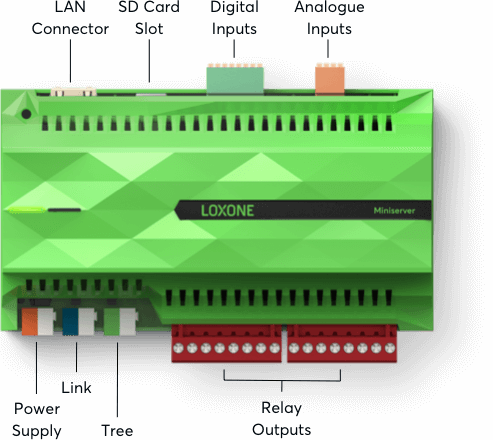

And I am correct: the initialization phase for the SD card seems to follow the specification from the SD Group perfectly and can detect all types of SD cards up to SDHC. I didn’t really care to look into the exact implementation details too much here.Ĭonsidering that the physical communication is standardized and that the actual firmware is read from the SD card by the boot code from the flash memory, I don’t expect too much special code for reading. The Miniserver does that with the help of some gate logic, probably for buffering. That is not a surprise, considering that even Arduinos can do that easily.

LOXONE MINISERVER UPDATE
You don’t want to release an update to the Miniserver for different types of SD cards.Īs I already looked at the mainboard of the Miniserver, it seems the CPU is talking directly to the SD card. Loxone could do that, but it is not probable, just because it makes it really hard for them to switch vendors for their SD cards, if prices and or availability changes. It is also possible to only support a subset of commands for a manufacturer, if they supply specific SD cards. However, there are options to have custom commands or at least non-mandatory commands. This includes the communication on the bit level, as well as how commands are executed. SD cards exists in many different varieties, but have to follow the specifications from the SD Group. The server ships with a 4GB Micro SD Card, which is of the SDHC type. Wow, this is exciting! What mystery low level functions are they using? Time to find out. Use only Loxone SD cards for the Miniserver. All SD cards have their own CPU which manages the flash memory. For optimum performance, Loxone OS accesses many low-level functions of the SD card, unlike, for example, a digital camera. Loxone states the following on their website:


 0 kommentar(er)
0 kommentar(er)
